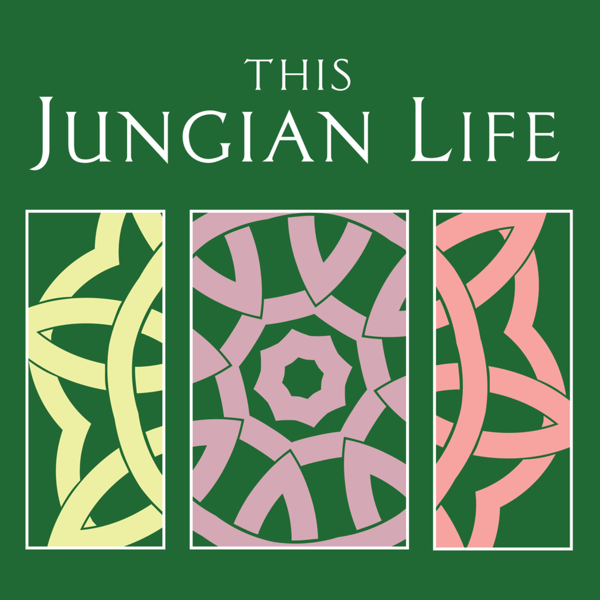Mandala Archetype: How the Self Turns Chaos into Cosmos
This Jungian Life Podcast
Joseph Lee, Deborah Stewart, Lisa Marchiano
4.8 • 1.7K Ratings
🗓️ 29 May 2025
⏱️ 73 minutes
🧾️ Download transcript
Summary
DREAM WITH US, and we’ll teach you how to interpret them!
Mandalas are Psyche’s way of drawing a compass for you when life feels off-kilter. Jung noticed that these circular patterns—whether they appear in Navajo sand paintings, Tibetan yantras, or last night’s dream—pull everything back toward a stable center he called the Self.
The rim defines where your ego ends; the cross-lines and repeating fours help you locate sensation, feeling, thinking, and intuition in relation to your core. By “walking” the circle, even in imagination, the ego learns to orbit rather than hijack the organizing center, and the usual tug-of-war between instinct and spirit eases.
Jung’s own Liverpool dream, with its sunlit circular island in a dark industrial square, showed him how a mandala can emerge autonomously whenever Psyche needs to order chaos and point the way back to wholeness. Curious why a circle keeps popping up in dreams and sacred art?—listen in and find out how it can quietly realign your life.
*Featuring our new Q&A section where we answer questions from our Patrons!
GO DIRECTLY TO THE Q&A: 43:29
LOOK & GROW
Join THIS JUNGIAN LIFE DREAM SCHOOL
Do you have a topic you want us to cover?
WE NEED YOUR HELP! Become a patron to keep TJL running.
We've got totally NEW MERCH!
We’d like to take a crack interpreting your dream.
If you’ve been struggling in the dark, trying to find the keys to unlock your dreams, help has arrived. Order your copy of Dream Wise: Unlocking the Meaning of Your Dreams from the hosts of This Jungian Life podcast and open the secret door.
Transcript
Click on a timestamp to play from that location
| 0:00.0 | Welcome to this Jungian life. |
| 0:04.2 | Three good friends and Jungian analysts, Lisa Marchiano, Deborah Stewart, and Joseph Lee, |
| 0:09.7 | invite you to join them for an intimate and honest conversation that brings a psychological perspective to important issues of the day. |
| 0:19.4 | I'm Lisa Marchiano, and I'm a Jungian analyst in Philadelphia. I'm Joseph Lee, |
| 0:24.9 | and I'm a Jungian analyst in Virginia Beach, Virginia. I'm Deborah Stewart, a Jungian analyst, |
| 0:31.1 | and Cape Cod. |
| 0:46.4 | Thank you. This week on the podcast, we're going to talk about mandalay's. |
| 0:50.3 | Now, mandalas have permeated the popular culture to a certain extent. |
| 0:53.6 | I think I have perhaps more than one mandala coloring book. But they were important to |
| 0:55.8 | young, and of course they are very, very ancient. This came up for me recently when I was at the |
| 1:02.2 | British Museum and saw some incredible artwork of some mandala's, some ancient mandala's that were |
| 1:09.6 | created that are there in the museum. |
| 1:11.2 | So it inspired me to have us talk about this kind of important idea that Jung spent a lot of time |
| 1:19.1 | thinking and writing about. |
| 1:21.0 | So like a lot of Sanskrit words, they're very plain speak. |
| 1:26.8 | Chakra, for instance, that many people know, means quiel. |
| 1:30.3 | Bandala means circle. |
| 1:32.8 | Very descriptive, very direct. |
| 1:36.2 | So as part of the ancient spiritual tradition, |
| 1:39.3 | and our first evidence of this seems to be from the Vedas, |
| 1:42.7 | that there are descriptions of these kind of symbols that are |
| 1:47.9 | used to help people develop. Mandela, just in terms of observation, is a circle often with |
... |
Please login to see the full transcript.
Disclaimer: The podcast and artwork embedded on this page are from Joseph Lee, Deborah Stewart, Lisa Marchiano, and are the property of its owner and not affiliated with or endorsed by Tapesearch.
Generated transcripts are the property of Joseph Lee, Deborah Stewart, Lisa Marchiano and are distributed freely under the Fair Use doctrine. Transcripts generated by Tapesearch are not guaranteed to be accurate.
Copyright © Tapesearch 2025.

